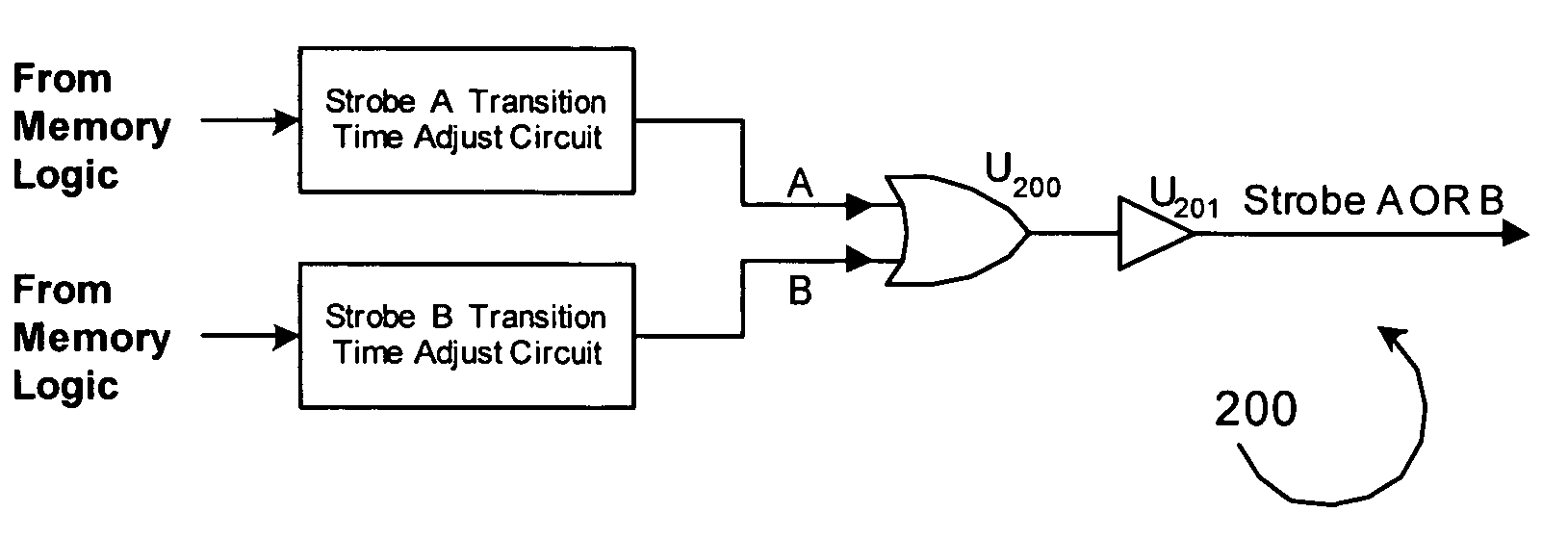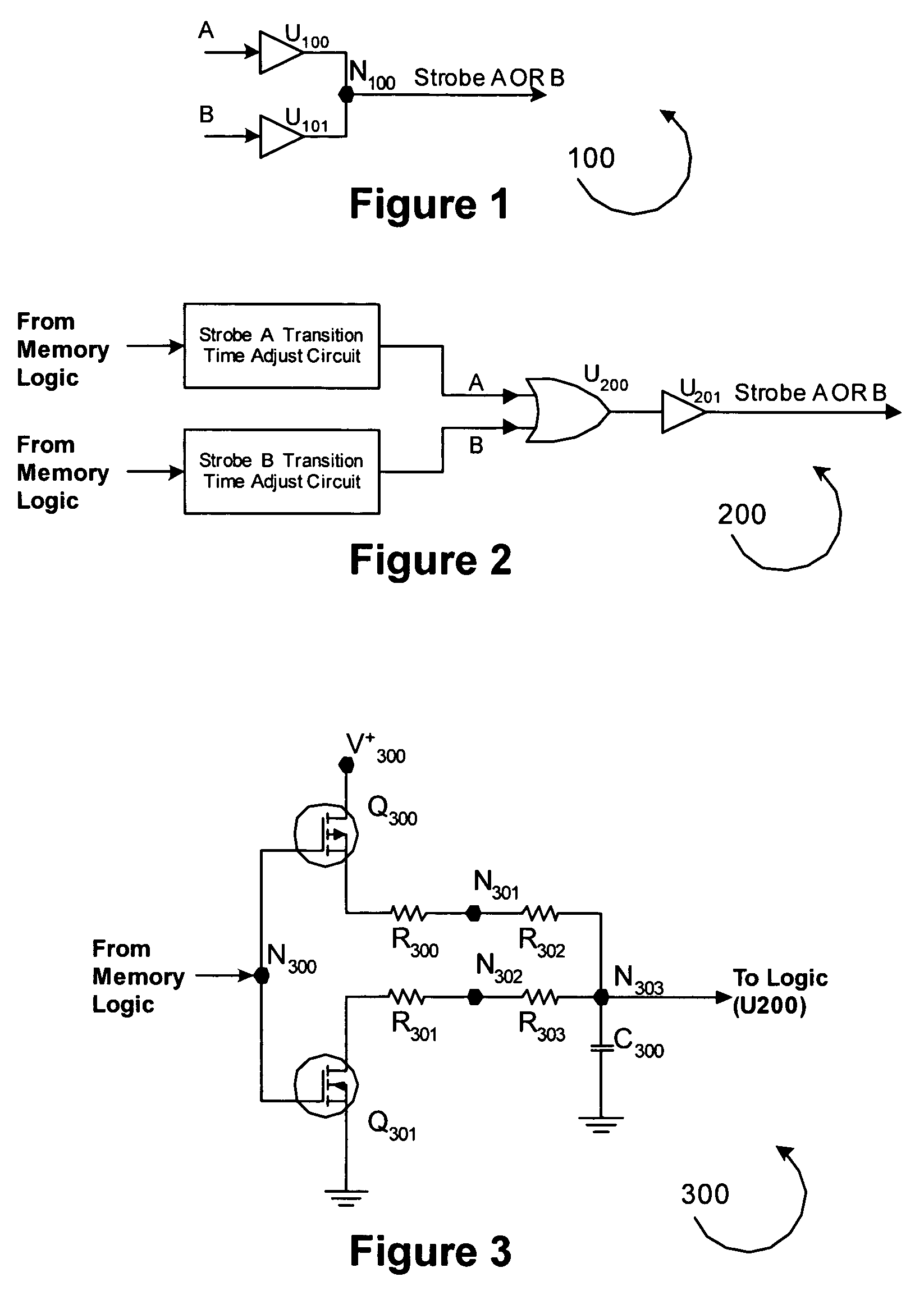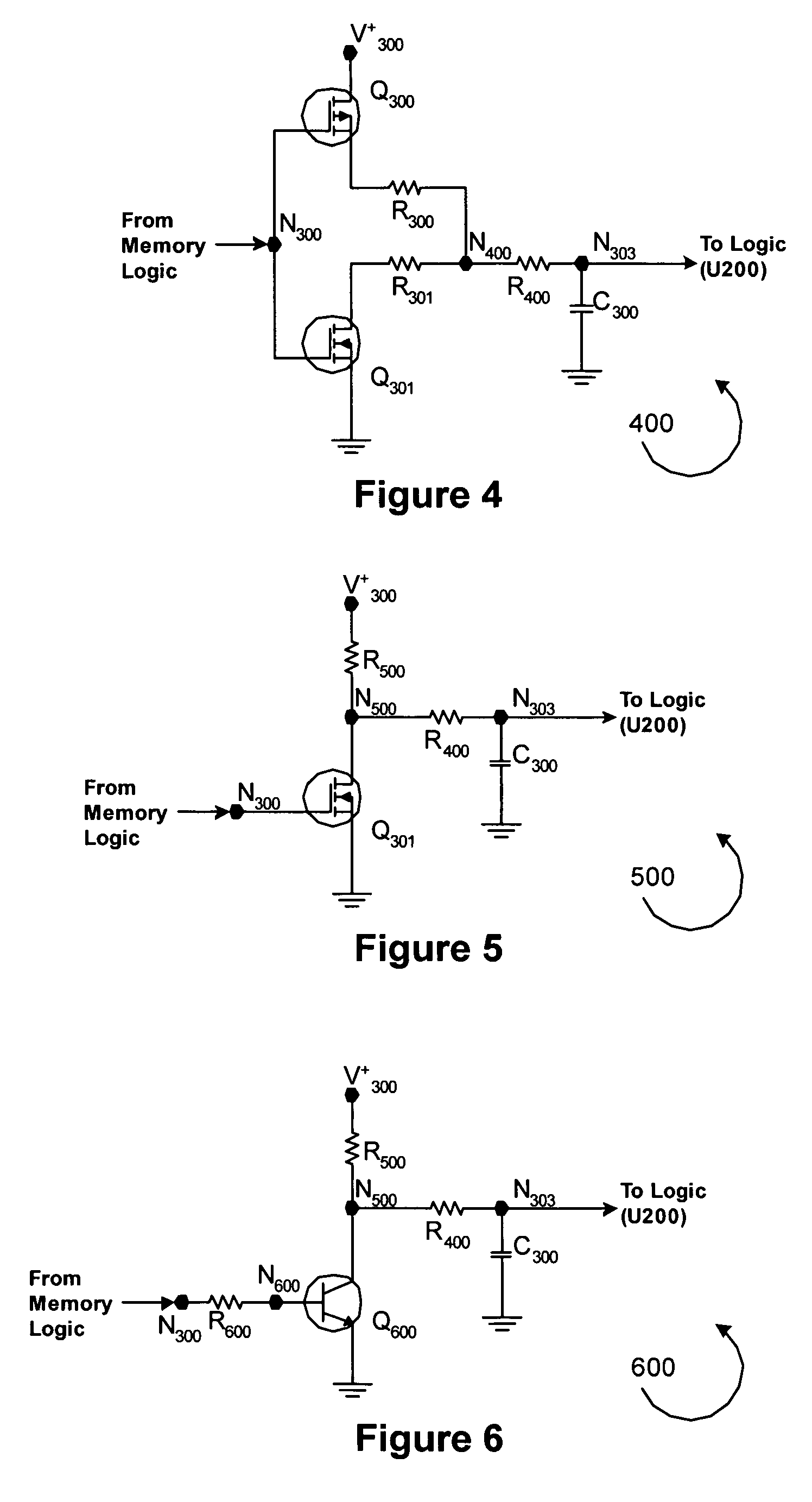Enhanced timing margin memory interface
a memory interface and timing margin technology, applied in logic circuits, digital storage, instruments, etc., can solve the problems of low yield production, low yield production, and high cost of memory modules
- Summary
- Abstract
- Description
- Claims
- Application Information
AI Technical Summary
Benefits of technology
Problems solved by technology
Method used
Image
Examples
Embodiment Construction
[0018]The present invention is directed to circuitry for use in a memory module. In the following description, numerous specific details are set forth to provide a more thorough description of embodiments of the invention. It is apparent, however, to one skilled in the art, that the invention may be practiced without these specific details. In other instances, well known features have not been described in detail so as not to obscure the invention. Except as noted herein, common components and connections, identified by common reference designators function in like manner in each circuit.
[0019]The present invention is illustrated in FIG. 2 and comprises a single line driver for the memory buss line being driven, one or more combinational logic gates for selecting or combining logic signals to be communicated over the memory buss line, and a transition time adjustment circuit for each signal that would other be wired-OR through its line driver buss interface in the present art. Strob...
PUM
 Login to View More
Login to View More Abstract
Description
Claims
Application Information
 Login to View More
Login to View More - R&D
- Intellectual Property
- Life Sciences
- Materials
- Tech Scout
- Unparalleled Data Quality
- Higher Quality Content
- 60% Fewer Hallucinations
Browse by: Latest US Patents, China's latest patents, Technical Efficacy Thesaurus, Application Domain, Technology Topic, Popular Technical Reports.
© 2025 PatSnap. All rights reserved.Legal|Privacy policy|Modern Slavery Act Transparency Statement|Sitemap|About US| Contact US: help@patsnap.com



